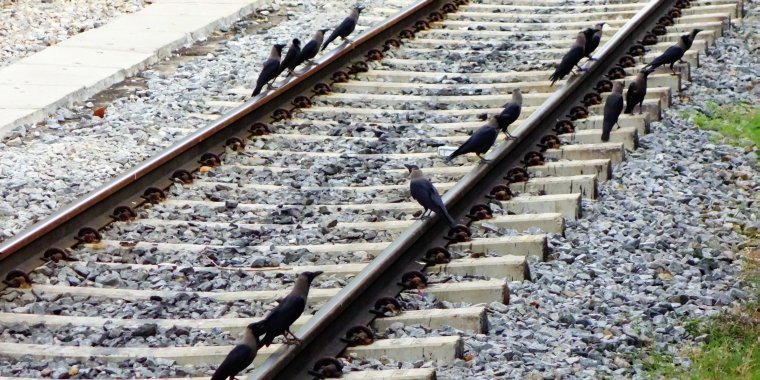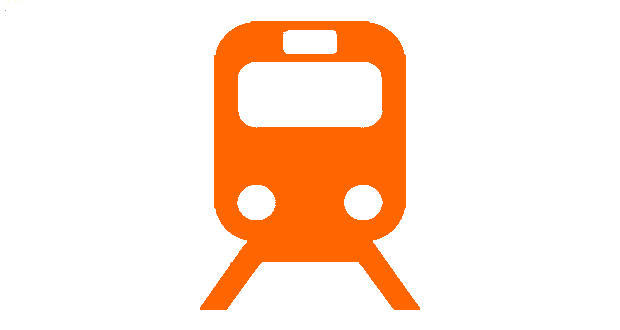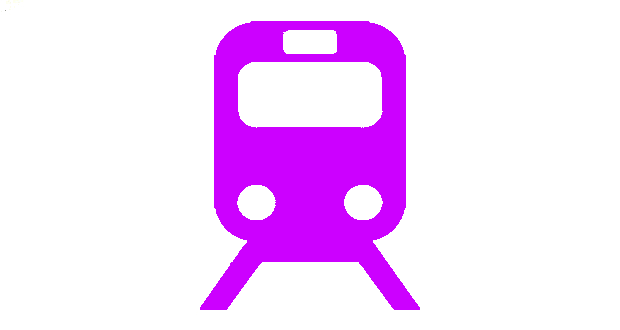IR Innovates: “Premium AC” Train with Dynamic Fares!

Winds of change are blowing at Indian Railways, the place where one would least expect such winds to blow even if they were to be hauled by a couple of WAP7s. But it is happening now. IR has just announced a “Premium” Air Conditioned special train between New Delhi and Mumbai Central which has some features which are a radical departure from anything on the Indian Railways network today. Of course, they announce special trains all the time, many of which are fully air conditioned and known by fancy names but still sun late by hours and are devoid of basic things like food and water. But this time it is different. You know it is different when IR decides to mess with its Sanctum Sanctorum: the fare structures, the running and reservation rules and such which were always considered too holy to be touched. This train is different because none of IR’s rules apply to it. Not only does it not have any stoppages enroute, it does not even have a fixed fare structure!
Yes, for the first time in history, there runs a train in India which has a dynamic fare structure where the fare will vary according to demand and availability of seats just like it does for airlines! This train is the first experiment in this direction followed by all airlines and most train systems in the World. So here are the details.
22914/22913 New Delhi – Mumbai Central – New Delhi Premium AC Superfast (WR)
This train will run as a limited-run special train on the busiest route in the country, between Mumbai and Delhi to clear the extra rush of passengers in the Winter holiday season. The details of the trains are as below:
Operational Timetable and Days of Service
- The 22914 AC Premium Special Superfast Express train will leave at 1450 from New Delhi NDLS to Mumbai Central BCT on 2013 Tuesday December 24, Friday December 26, Monday December 30, 2014 Thursday January 02, Saturday January 04 and Monday January 06. (6 trips). Arrives BCT at 0655 the next day.
- The 22913 AC Premium Special Superfast Express train will leave at 1600 from Mumbai Central BCT to New Delhi NDLS on 2013 Thursday December 26, Sunday December 29, 2014 Wednesday January 01, Friday January 03 and Sunday January 05. (5 trips). Arrives NDLS at 0755 the next day.
Route, Stoppage, Services: Running route of the train will be via Kota – Ratlam – Vadodara – Surat but it will have no commercial stoppages between Mumbai and Delhi (technically nonstop). Food and catering will be available just like on the Rajdhani Express and food tariff is included in the fare.
Composition: THREE AC 2 tier, 9 AC 3 tier coaches, 01 Pantry Car, 02 EOG (15 coaches).
Dynamic Fare Structure (As seen while booking air tickets)
The base fare of the train will be the fare of the Rajdhani Express on the Mumbai – Delhi route (Rs.1815 for 3AC and Rs.2495 for 2AC) plus Tatkal charges which will form the starting sale price for tickets on the “Premium AC” train (Rs.2197 for 2AC and Rs.2900 for 2AC). However this is not a fixed ticket price because the fare structure of this train is designed to be dynamic, which means that if demand for seats on the train increases, the ticket price of individual seats for the class will also increase. So those who book earlier and when there are more berths available will get tickets at a lower rate than someone who books later and when there are few seats available. The fare will be different for each transaction and will be indicated at the booking confirmation page of IRCTC. Basically, the same stuff you see while booking air tickets. If planes can do it, why not trains? See at the end for how the price changed.
However, it is too early to expect every-minute-changing prices here. While the ticket price will definitely be higher than that of the Rajdhani, there is no surety that the prices will change for every ticket. Because this is what the press release says:
The fare is also likely to increase depending on the demand intensity.
I hope that the fare is calculated automatically by some sort of algorithm and not by manual intervention.
Some other (shocking) features of this train are:
And it does not end here. IR has gone full unconventional by altering several of its age-old rules for this train.
- No Waiting List tickets will be issued! There will be no Waiting List Snake-and-Ladder games for this train as only Confirmed and RAC tickets will be issued. Once RAC gets over, you will see REGRET. Very unconventional!
- No Quotas or Goodies: Ticket Quotas like Tatkal, Ladies, Lower Berth, HO, DF etc, Modification of booking, Upgradation options and Concessions of any kind will NOT be allowed for these trains. What a break from tradition!
- Tickets will be available through IRCTC only! This means that you cannot book tickets on this train through PRS Reservation Center counters which is very unorthodox for IR! But tickets for empty berths if any can be bought from Current Booking counters after charting is done. They haven’t said anything about ticketing agents.
- Cancellations are allowed but no refunds will be given if you cancel a ticket on this train, just like confirmed Tatkal tickets. However, refunds will be allowed if the train is fully canceled due to unforeseeable circumstances (like fog maybe).

Analyzing these new “Premium AC Superfast” Trains
If you look at this train, there are several notable points that would indicate the seriousness of this exercise.
Indian Railways running laws (how trains should be run on the line) are based on train numbers. All Special train numbers including “Rajdhani” and “Shatabdi” specials always start with “0” (zero) which also indicates the priority they get on tracks, stations and for locomotives. This train is also announced to be a special but its number (22913/4) indicates it to be a Superfast Express (starting with 22) with high priority and clearance and not just an unimportant Special. In fact, even IRCTC shows this train as the “NDLS BCT RAJ”.
Not just the name, but everything about this train is Rajdhani-class and maybe even more. The Premium AC special covers the 1386 km Mumbai Delhi distance in 15 hours and 55 minutes at an average speed of 87 kmph, all which are exactly the same as those of the King of WR, the Mumbai Rajdhani. Its’ fare structure and catering is also Rajdhani class as are all services on board. The train will enjoy high priority clearance on the line because this being such an important experiment. The three zonal railways (WR, NWR, NR) and I am guessing even the Railway Board will be closely monitoring its performance to make sure that it runs on time. It leaves and arrives ahead of both the Rajdhanis from both ends.
Verdict: In all probability it looks like these trains are an experiment or a dry run, testing the waters for the launch of a new class of Premium Trains in India which will be nonstop between their destinations like the Durontos but with dynamic ticket fare pricing and except a few will be only run when demands are high. Maybe dynamic pricing will be extended to AC classes of some premium trains also. There was a report about how the current honorable Railway Minister Sri Mallikarjun Kharge is planning to launch a new brand of premium trains, which makes it clear what the intention behind this experiment is.
What the New “Dynamic Fares” Premium AC Special Could Mean for IR
Most of Indian Railways’ attempts at change in the past were limited to the introduction of new train types with changes in running patterns or coach compositions like the Durontos, Jan Shatabdis, AC Double Deckers etc, the only real innovation being the Garib Rath (all-AC sleeper configuration at 30% less fare). This is where this new attempt really stands apart because it directly touches the core of the Railways’ business practices and has the potential to bring about a paradigm shift in how it conducts business and not just stopping at external modifications. Said that, there is no doubt that the aim of all this is to make some extra revenue for the cash strapped Railways. When the airlines and private bus operators are minting money using dynamic pricing why should the Railways be left out? It is either make money and survive or else perish.
From a business point of view, Dynamic ticket pricing would seem to be the weapon of choice for Indian Railways because of the sky-high demand for most trains in India the entire year round. But practically there is no way dynamic fares can be launched across the board in India because more than their extreme price-sensitiveness, the concept of dynamic pricing is by and large alien to Indians who prefer all prices to be fixed at all times. Dynamic pricing is good business sense but it could hardly work in a country where raising ticket prices by a couple of paise can cause governments to shake and and to be frank, a large majority of our countrymen wouldn’t be able to afford tickets if all trains were to be dynamically priced. It would make sense to provide these services to people who wouldn’t mind paying more for better services. If these trains are to be successful they have to give superior service, which is what their target market wants. Will the railways rise up the occasion? Let us wait and see.
The Railways also is going through a period of great change, where consumer demand of people getting more and more aware of their rights is pushing the railways to mend their ancient ways of the Raj and of the colony. After major modernization attempts like LHB coaches and faster, more comfortable trains, we are now for the first time in its history, seeing Indian Railways launched a train with no quotas and no fixed fare structure. This new attempt, if successful, has the prospect of becoming one of the biggest turning points for the Indian Railways, not just in terms of revenue but also major overhaul and changes in rules and laws which could lead to finally bringing in better business practices for the greater good. There is a huge inertia governing the Railways as well as the rest of our country which is to be overcome for any sort of progress to happen and more thoughts like these should come around for that. I wish the “AC Premium” Superfast all the best! Expecting another run on the New Delhi – Howrah route soon!
Analysis of how “Dynamic Fare” Variations happened: The regular Rajdhani fare is Rs.1815 and Rs.2495 respectively and tickets opened at selling prices of Rs.2197 and Rs.2900 respectively. The highest price for which dynamically priced tickets went in the AC 3 tier class was for Rs.2897 and in the AC 2 tier class was for Rs.3647. However, it could be seen that until there were 300+ tickets available, there was no increase in prices and tickets were still going at the opening price. Ticket fare started increasing drastically after available seats became less than 100 and by the time tickets hit RAC the price for a 3A seat was Rs.2487 which then closed at Rs.2897. So the person who bought the last ticket paid around Rs.1000 more than the regular Rajdhani ticket. Ticket prices didn’t increase for individual tickets but it looked like it worked rather in blocks of tickets.
On post-Christmas trains, “dynamic” prices have shot up to Rs.4200+ for 2AC and Rs.3500+ for 3AC!
Good show Indian Railways! We have a winner here!
[divider]
Information provided here is only indicative in nature and please always confirm all information with official sources before relying on them (Contact your nearest railway station or call 139 or visit the official website of Indian Railways). This website is not an official website of the Indian Railways but is run by a railway enthusiast. The official website of the railways is http://indianrailways.gov.in.




